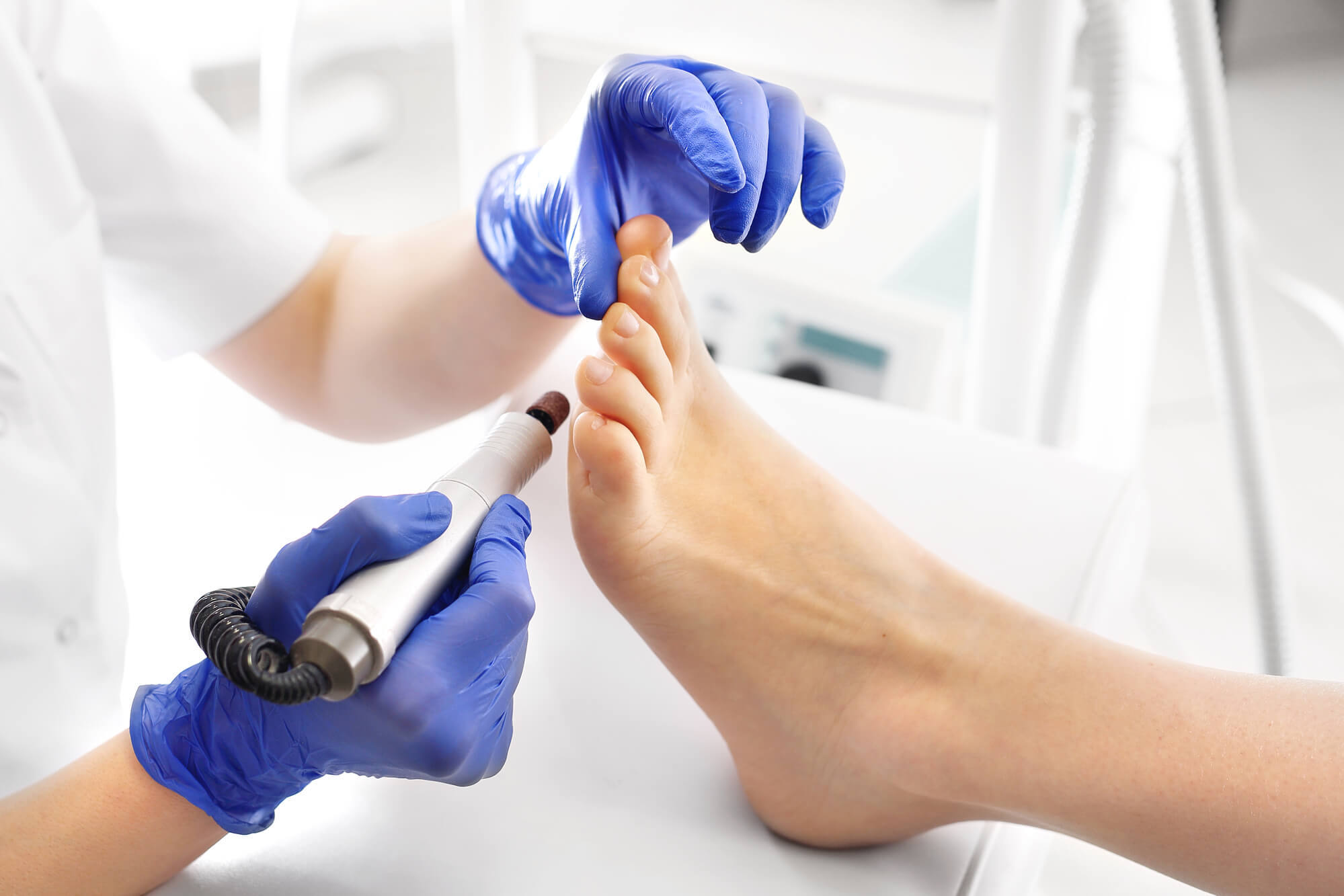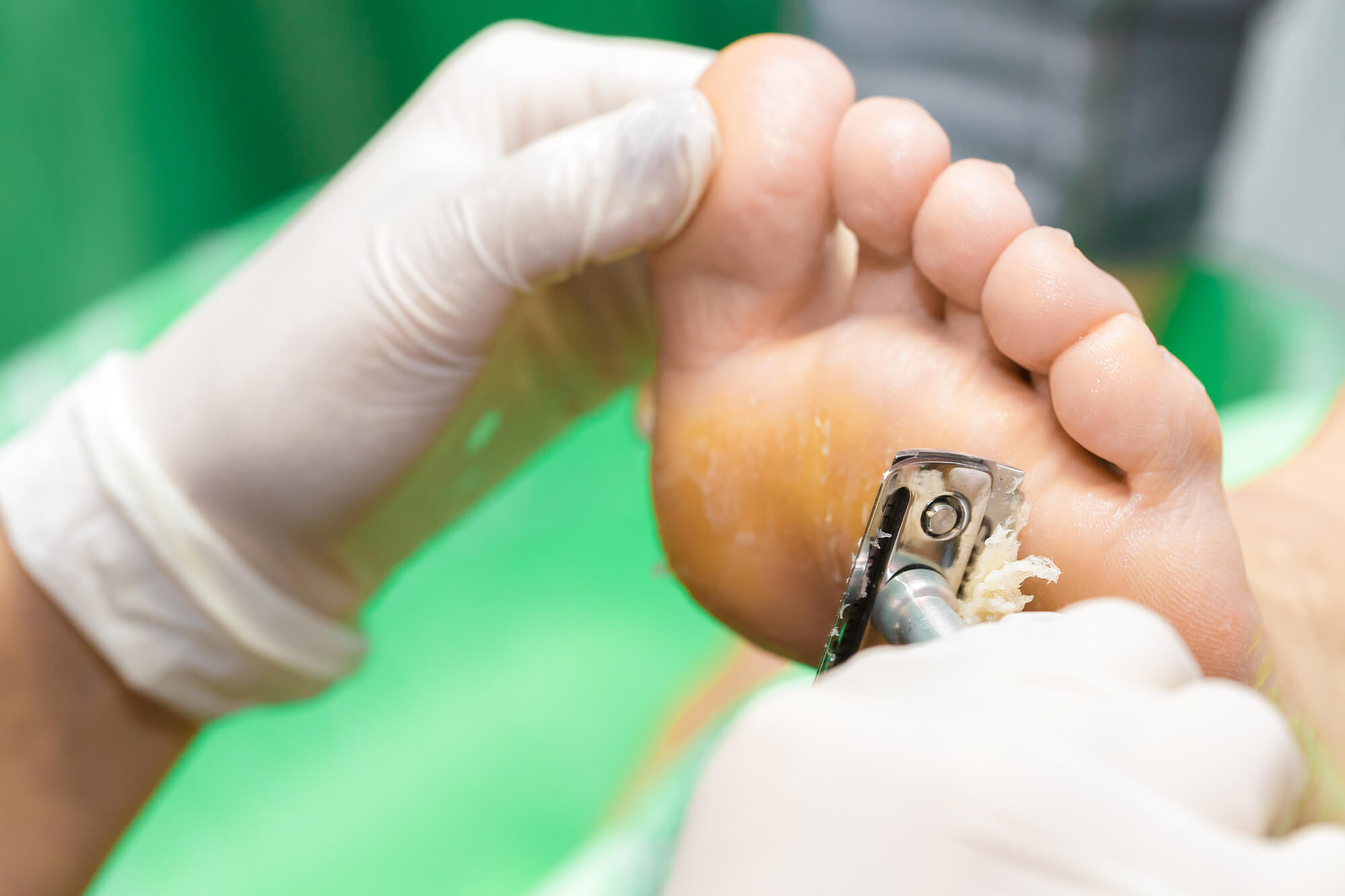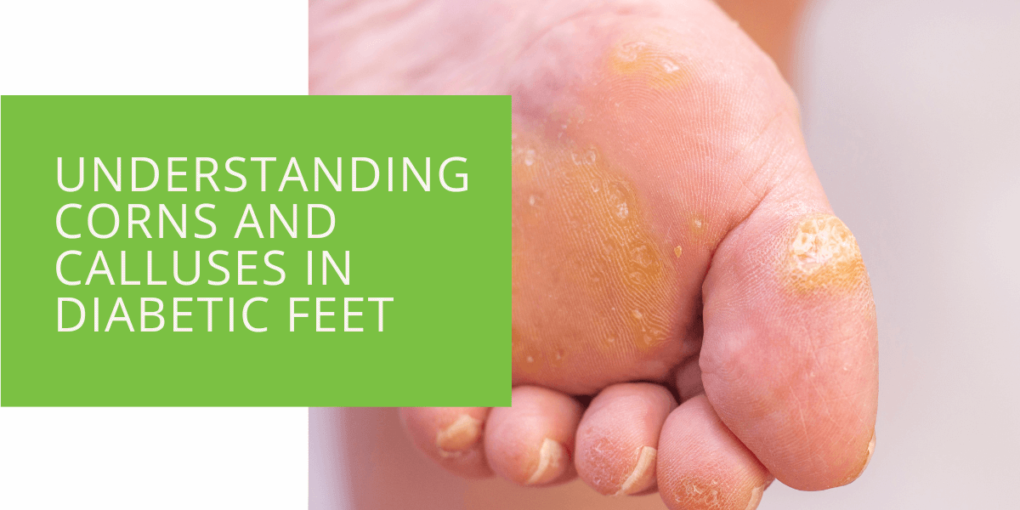Understanding Corns and Calluses in Diabetic Feet
Diabetes is a condition that affects millions of people worldwide. It can cause many complications, including foot problems such as corns and calluses. Corns and calluses are areas of thickened and hardened skin that can develop on the feet due to friction or pressure. In this article, we'll discuss how corns and calluses develop, how to treat them, and how to prevent them from forming in the first place.
What are Corns and Calluses?
Corns and calluses are thick, hardened areas of skin that develop due to pressure or friction. They usually form on the feet, particularly on the sole or ball of the foot, but can also develop on the toes. Corns and calluses are more common in people with diabetes due to neuropathy, which can cause a loss of sensation in the feet. This means that people with diabetes may not feel the friction or pressure that leads to the formation of corns and calluses.
A corn is a callus that forms on a small, localized skin area. They are usually smaller than calluses and have a hard center with a soft ring around the outside. Conversely, a callus is a larger area of thickened skin that can cover a wider area of the foot.

Understanding the Causes of Corns and Calluses
Corns and calluses are caused by repeated friction or pressure on the skin. When the skin is subjected to friction or pressure, it produces extra layers of skin to protect itself. Over time, these extra layers can build up, leading to the formation of corns and calluses.
Several factors can contribute to the development of corns and calluses, including:
Tight or Ill-Fitting Shoes
Wearing shoes that are too tight or loose can cause friction and pressure on the feet, leading to corns and calluses. Too-tight shoes can pinch the toes, while too loose shoes can rub against the skin, causing friction.
High Heels
High heels can also contribute to the development of corns and calluses, as they pressure the balls of the feet and the toes.
Abnormal Foot Anatomy
People with foot abnormalities, such as bunions or hammertoes, may be more prone to developing corns and calluses due to abnormal pressure on certain feet areas.
Poor Foot Hygiene
People not practicing good foot hygiene, such as washing and drying their feet regularly, may be more prone to developing corns and calluses.
Diabetes
People with diabetes are at a higher risk of developing corns and calluses due to neuropathy, which can cause a loss of sensation in the feet. This means they may not feel the friction or pressure that leads to the formation of corns and calluses.
Understanding the causes of corns and calluses can help people take preventative measures to avoid their development. By addressing the underlying causes, such as wearing appropriate footwear and practicing good foot hygiene, people can reduce their risk of developing corns and calluses and maintain good foot health.

How are Corns and Calluses Treated?
Corns and calluses can be treated in various ways, depending on their severity and underlying cause. In general, treatment for corns and calluses focuses on reducing pressure and friction on the affected area, removing the thickened skin, and addressing any underlying issues contributing to the problem.
Soaking and Exfoliation
One of the simplest ways to treat corns and calluses is to soak the affected area in warm water for 10-15 minutes. This can help to soften the skin, making it easier to remove. After soaking, use a pumice stone or a foot file to remove the thickened skin gently. Be careful not to overdo it, leading to bleeding or infection. It is also essential to avoid cutting the skin with sharp objects, such as scissors or knives, as this can increase the risk of infection.
Medicated Creams and Patches
In some cases, a podiatrist may recommend using a medicated cream or patch to treat corns and calluses. These products contain salicylic acid, which can help to dissolve thickened skin. However, following the podiatrist's instructions carefully when using these products is important, as they can be harsh on the skin and may cause irritation or burning.
Debridement
For more severe cases of corns and calluses, a podiatrist may recommend debridement, which involves removing the thickened skin with a scalpel. This procedure is performed under sterile conditions to minimize the risk of infection. After debridement, the podiatrist may apply a dressing or padding to protect the affected area and reduce pressure and friction. In some cases, debridement may need to be repeated periodically to prevent the corn or callus from returning.
Surgery
Surgery may be necessary to correct the issue if an underlying problem, such as a bunion or bone spur, causes the corn or callus. However, surgery is typically a last resort and is only recommended if other treatments have been unsuccessful.

Professional Care
It is important to note that people with diabetes should always seek professional care from a podiatrist to treat corns and calluses. People with diabetes are at a higher risk of developing foot ulcers, which can be a severe complication of diabetes. Therefore, it is crucial to take preventative measures to avoid the formation of corns and calluses in the first place and seek professional care when needed.
Preventing Corns and Calluses in Diabetic Feet
Preventing corns and calluses is the best course of action. Proper foot care and hygiene can go a long way in preventing these foot problems. Here are some tips for taking care of your feet:
- Wash your feet daily with warm water and mild soap. Dry them thoroughly, paying attention to the area between the toes.
- Wear shoes that fit well and provide adequate support. Avoid shoes that are too tight or too loose.
- Check your feet regularly for any signs of corns, calluses, or other foot problems.
- Trim your toenails straight across and avoid cutting them too short.
- Use a pumice stone or file to gently remove any rough patches of skin, but be careful not to overdo it.
- If you have diabetes, it is important to have regular podiatry checkups to monitor your feet for any signs of foot ulcers or other complications.
By caring for your feet, you can prevent the formation of corns and calluses and avoid more serious foot problems. If you notice any signs of corns or calluses, it is important to seek professional care from a podiatrist as soon as possible.
Conclusion
Corns and calluses are common foot problems that can be prevented and treated with proper foot care. If you have diabetes, taking preventative measures, including regular podiatry checkups, is crucial to avoid more severe foot problems such as foot ulcers. Seek professional care from a podiatrist if you notice any signs of corns or calluses.

